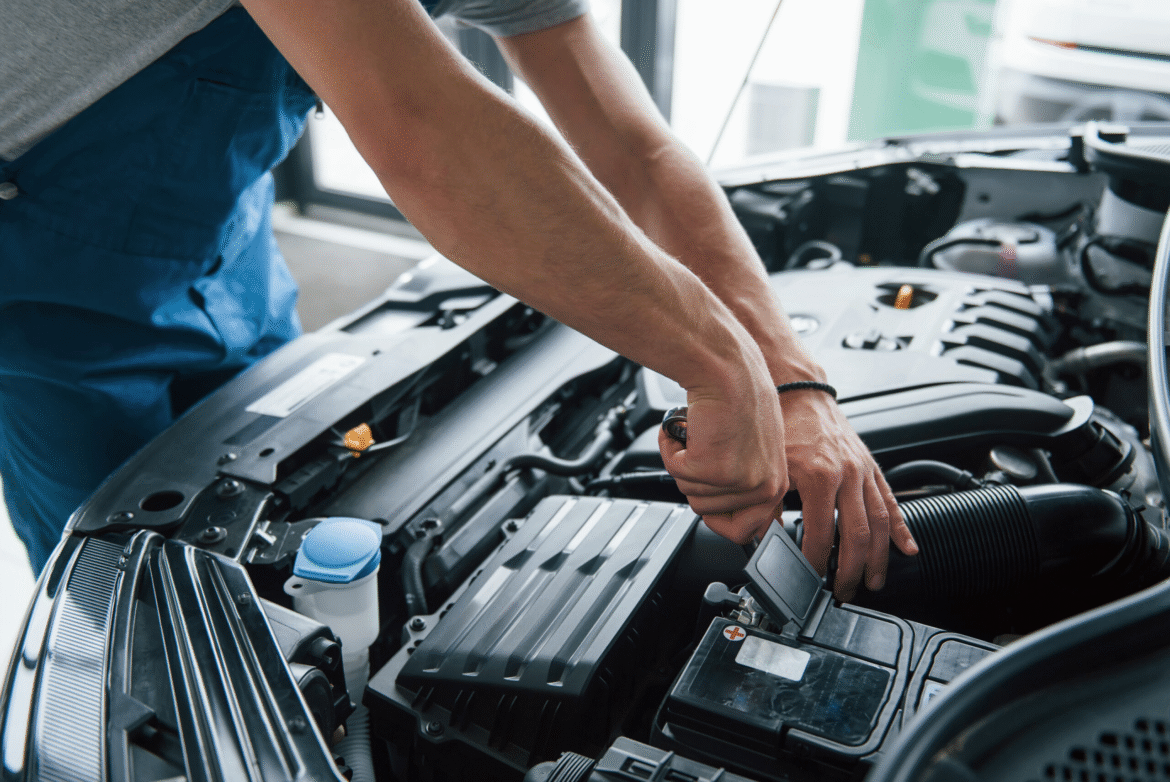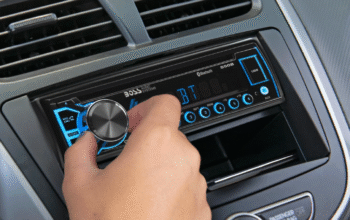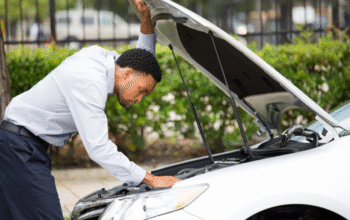Hearing that you need to replace a car bttery could feel overwhelming, especially if you have never done it before. However, it’s a common and relatively easy DIY car maintenance task. Oftentimes, when a car won’t start, the cause is often a weak or ded battery, and knowing how to replace the battery yourself will save you time, money and frustration.
In this step-by-step, detail oriented explanation, we are going to show you how to remove your old car battery and replace it with a new one, safely and with simple tools you probably alrady have at your home.
When Should You Replace Your Car Battery?
:On average, car batteries last about three to five yers. But certain factors can affect battery life such as fluctuating temperature, frequent short distances, and long periods of inactivity. Here are some signs to look out for that may indicate your battery is short on time:
- Slow engine crank when starting
- Dim headlights or electrical issues
- Battery warning light on the dashboard
- Clicking sound when turning the key
- Swollen or corroded battery case
- Battery older than 3 years
If you’ve experienced any of these issues, it may be time to replace your battery.
Tools and Materials You’ll Need
Before you begin, gather the following tools and materials:
- A new car battery (check your car manual or old battery label for specs)
- Wrenches or socket set (usually 10mm)
- Battery terminal cleaner or wire brush
- Gloves and safety glasses
- Rag or paper towels
- Anti-corrosion spray or petroleum jelly
- Memory saver (optional, to keep car computer settings)
Safety first: Always wear gloves and eye protection when handling car batteries. They contain sulfuric acid and can be harmful if mishandled.
Step 1: Park and Prepare Your Vehicle

Park your car on a flat, level surface. Turn off the vehicle, set the parking brake and remove the key from the ignition. Open the hood. You should be able to see the battery in the engine bay (often at the front end).
If you’re using a memory saver, plug it into your OBD2 port or cigarette lighter to keep the vehicle’s computer settings.
Give the engine time to cool if you’ve had it running. This will help prevent burns and lessen the chance of an arc or spark occurring.
Step 2: Identify the Battery Terminals
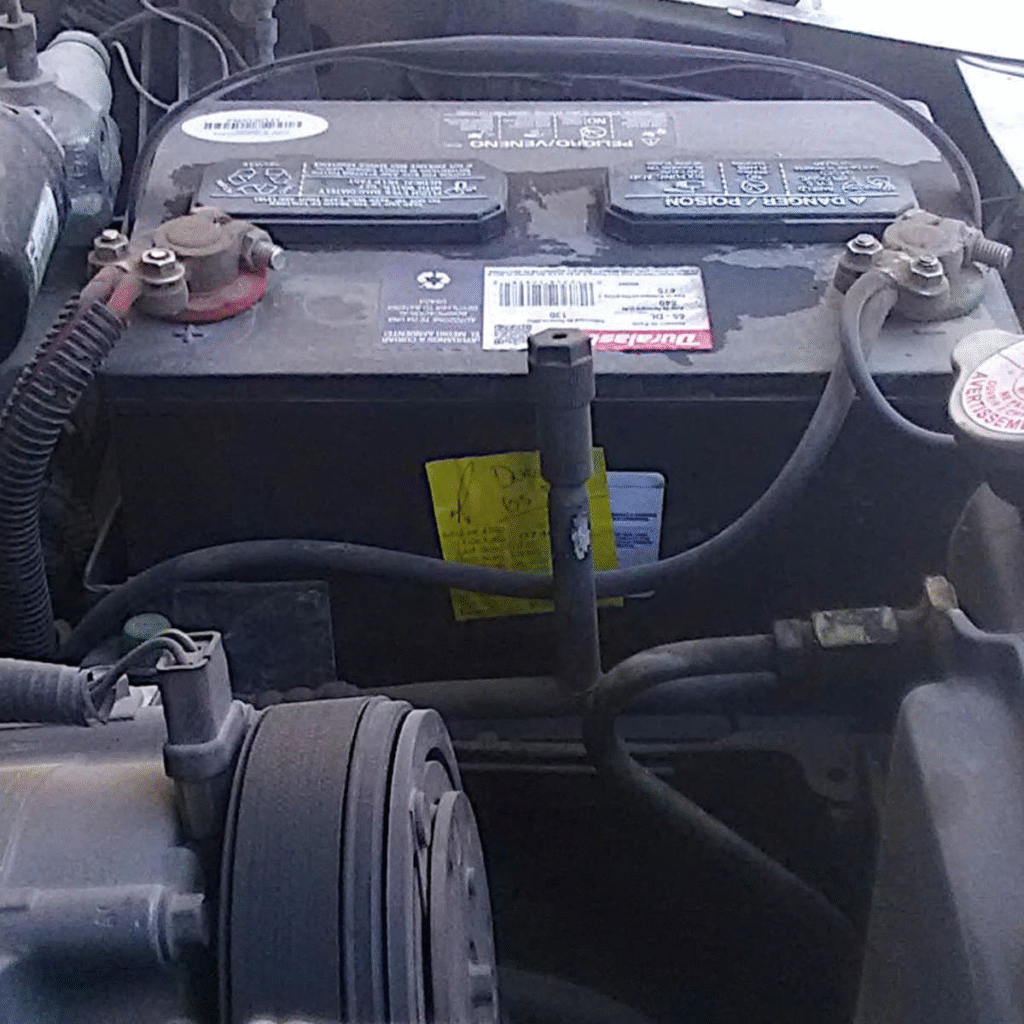
Most car batteries have two terminals:
- Positive terminal (+): Often has a red cap or cable and a plus sign.
- Negative terminal (−): Usually black with a minus sign.
Always disconnect the negative terminal first to reduce the risk of electrical shock or short-circuiting.
Step 3: Disconnect the Old Battery
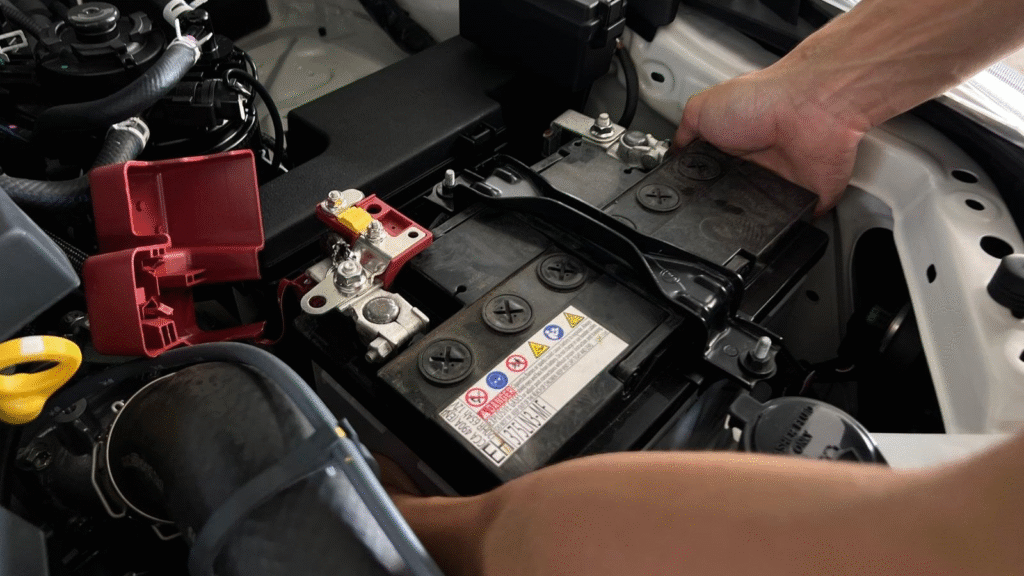
Utilizing your wrench or socket, unscrew the nut on the negative (-) terminal clamp. Once loose, you can twist and pull the clamp away from the terminal. Be careful not to touch the positive terminal while you are working on the negative side.
Repeat the same process on the positive (+) terminal.
If your battery is secured by a hold-down bracket or strap, use your tools to remove it.
Now you can carefully lift the battery out of its tray. Car batteries can be heavy (typically 30-50 lbs), so use your legs to lift and do not tip it upside-down. Set the old battery aside in a safe location.
Step 4: Clean the Battery Tray and Terminals
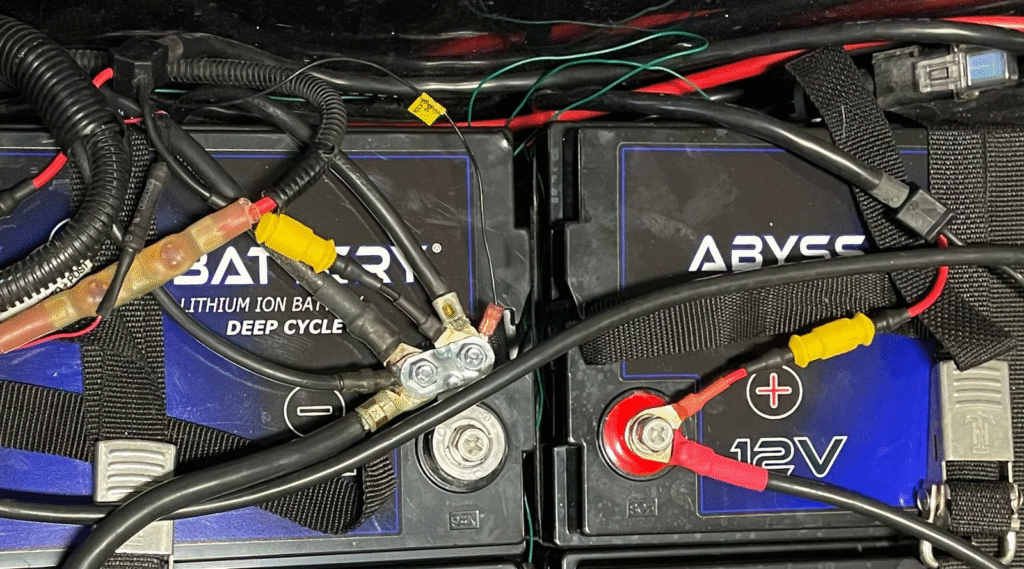
Prior to putting in the new battery, take a look at the battery tray for any kind of corrosion or debris. Wipe it off thoroughly with a rag or wire brush.
Check the battery cable clamps as well. If you see any white, or greenish corrosion, use a wire brush and a baking soda and water mixture to scrub it off. Make sure the clamps are dry when you continue.
Put some anti-corrosion spray or petroleum jelly over the terminals to prevent any buildup in the future.
Step 5: Install the New Battery
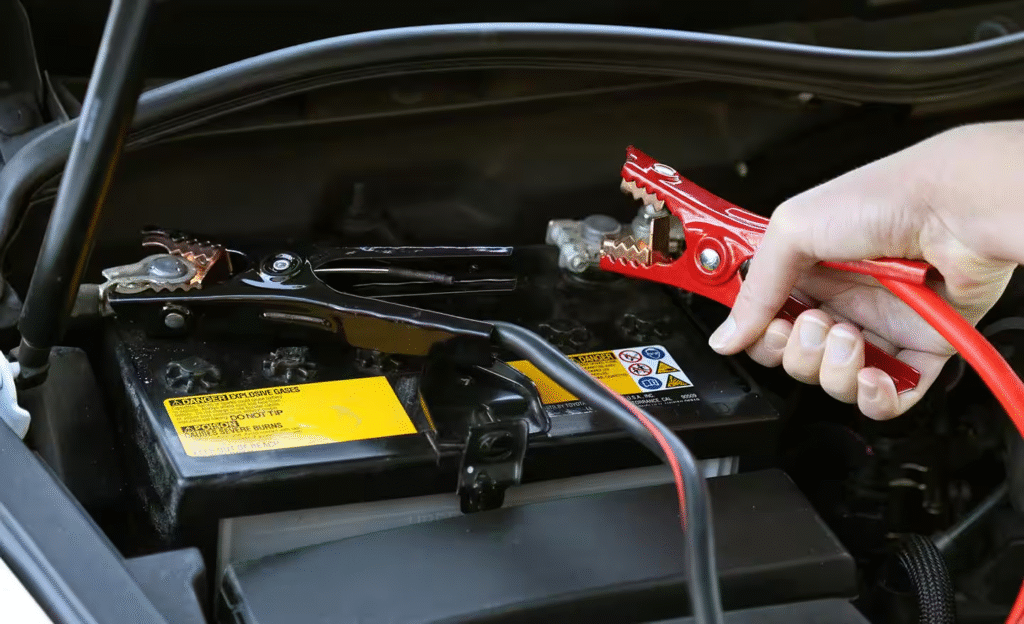
Gently slide the new battery into the tray, ensuring the terminals are correctly positioned (positive to positive, negative to negative).
Attach/fasten the battery holddown bracket or strap.
Now attach the positive (+) terminal first. Slide the clamp onto the post and tighten the nut just until secure, do not overtighten as this can damage the terminal.
Repeat this for the negative (−) terminal.
Ensure both connections are firm and the battery does not move when nudged.
Step 6: Final Checks

- Both terminals are tightly secured
- The battery is firmly held in place
- No tools are left in the engine bay
If you used a memory saver, remove it, then start the car. It should start without a problem. If the engine cranks sluggishly, or the dashboard warning lights activate, check your connections again.
Now close the hood and go for a short drive to allow the vehicle’s computer to reset.
Battery Recycling Tips
Do not throw your old battery in the trash. Car batteries are filled with toxic chemicals and must be disposed of properly.
Take the old battery to:
- An auto parts store (many offer free recycling and may even give you a small credit)
- A recycling center that accepts car batteries
- A local mechanic or dealership
Most places will recycle the battery for free and may require you to return the old one when buying a new one (core charge).
Tips to Extend Your New Battery’s Life
Now that your car has a fresh battery, here’s how to keep it working well for years:
- Drive your car regularly to keep the battery charged
- Avoid frequent short trips that don’t allow the battery to fully recharge
- Turn off lights, radio, and AC before shutting off the engine
- Keep battery terminals clean and corrosion-free
- Test your battery annually after 2–3 years of use
- Store your car in a garage or shaded area during extreme weather
Following these simple practices can help your new battery last longer and save you from unexpected breakdowns.
When to See a Mechanic
Replacing the battery is usually easy, but there are times when it’s best to get professional help. Visit a mechanic if:
- Your battery keeps dying frequently
- Your vehicle’s electrical system malfunctions after replacement
- The battery terminals are severely corroded or damaged
- You’re unsure how to handle hybrid or luxury vehicle batteries
Some newer cars have complicated battery setups or require programming after a battery swap. In those cases, it’s better to let a professional handle it.
Conclusion
When it comes to replacing your car battery, you don’t need specialized skills or fancy tools! A bit of knowledge and confidence is all you need. Whether you’re stuck on your driveway or just keeping up with your routine maintenance, being able to do a DIY battery replacement can save you time as well as cash.
With this step-by-step resource you have all the know-how to responsibly and safely replace that old battery for a new one. Just make sure you do it safely, recycle your old battery, and keep up with your vehicle maintenance to avoid another problem in the future.
You can do it, you are saving money, get out there and go without worry. You’ve got this.

